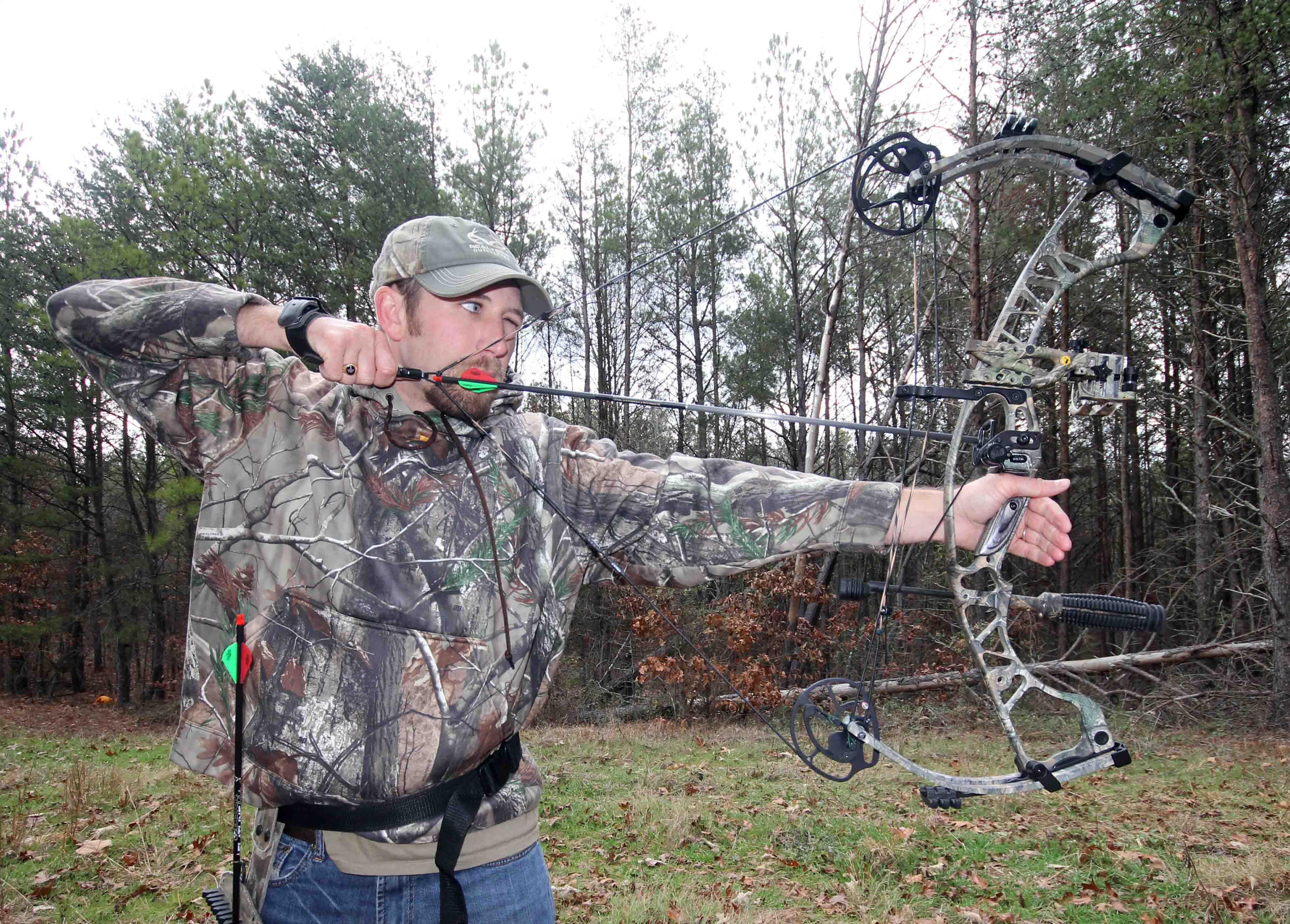Hoyt Spyder 30 Review
The Hoyt Spyder 30 is Hoyt's flagship bow for 2013. It's equipped with the RKT cam from last year and, at 30 inches axle to axle, is Hoyt's most compact bow yet. It's light, too, with an overall weight of just 3.8 pounds. A pocket bow, if you will, obviously aimed at a chunk of that Mathews Heli-M and Z7 market share. I can sit flat on my rear, turkey-hunting style, and shoot with clearance to spare between the bottom cam and the ground. The grip is a pretty laminated hardwood grip and a wonderful improvement over last year's rubber grip.
The Spyder 30 has a 6 ¾-inch brace height; longer than most speed bow models on the market, but not by much. Increasingly, it seems that 6 ½ to 7-inch range is the going standard for a hunting bow. It's a good compromise between shootability and speed.

I check speeds with finished hunting arrows, as 300 grains is pretty light. In this case, I used a 358-grain Easton Flatline 340. The results are more comparable to the real-world numbers hunters can expect. The Spyder 30 produced speeds ranging from 304 to 307 fps. The IBO/ATA math says to subtract 10 fps for every inch of draw length under 30 inches; 1 fps for every 3 grains of arrow weight above that 5 grain-per-pound specification; and another 1 fps for every 3 grains of weight on the string (D-loop, peep). In short, you're looking at lopping off more than 40 fps with my setup, which means the Spyder 30 is actually shooting a little faster than advertised. Who doesn't like to see that?
Despite the speed, the light weight, the short axle-to-axle length, and the relatively short brace height -- all factors that supposedly make a bow more difficult to shoot -- I've had no shooting problems with this one. I admittedly haven't given it the 50-, 60- and 70-yard range wring-out, where the true test of forgiveness comes in, but I have shot it extensively at 20, 30 and 40 yards. That's whitetail, pig and turkey-killing distance, and I've had no problem shooting good groups at any of those ranges (as an aside, I've equipped the bow with a QAD drop-away rest, 3-pin Trophy Ridge Sight, and a Trophy Ridge Shockstop stabilizer). The bow is wispier in the hand than a longer, heavier bow, which is going to affect accuracy in the long haul, but not enough to offset the handling advantages for a hunter.
The Spyder 30 is quiet, which of course begs for a discussion on the new AirShox Technology on the limbs. These are yet another version of sound and vibration dampeners, but they're an independent piece. When the limbs flex, the AirShox do not. So, the limbs don't bear the load of the dampeners during the flexing and shooting cycle. Does that make a big difference? Honestly, I can't say. I don't measure decibels. The bow is quiet, but so are most modern compounds. I can't see that the AirShox hurt anything, but if you don't like them, they're easily removed with an Allen wrench. You can swap them out for different colors, too, if you're into that whole bow pimping thing.
In the end, this bow was something of a surprise. For pure shooting characteristics, I like longer, heavier bows, and because of that, will always gravitate toward setups like the Vector Turbo, a 35-inch 2012 model that I used all this season. The Spyder 30 is not as easy to shoot as the Vector Turbo, but it's a full 5 inches shorter and a lot lighter. That doesn't seem like much until you're wielding it inside a ground blind. The tradeoff in shootability isn't a big one. And there are longer versions of the Spyder available, too, including the Spyder 34, with a 6 3/4-inch brace height; and the Spyder Turbo, which is 34 inches axle to axle with a 6-inch brace height.
The little bow is faster than advertised, with a smooth draw cycle. My only real complaint was the back wall, which had some bounce. I noticed it, and so did other shooters at the pro shop. Interestingly, other reviews I've read of the same bow have complimented the solid back wall. So I don't know if it's a product of the particular bow I reviewed, or if I'm being too picky. Either way, it's a tiny issue most bowhunters would never notice.
The bow retails for about $1,000. Painfully expensive, I know. But that's about the going rate for top-tier bows of this category these days. If you're shopping for a short, lightweight, flat-shooting bow, this is one to try. For more information on the Spyder 30 and other 2013 Hoyt bows, visit hoyt.com.







